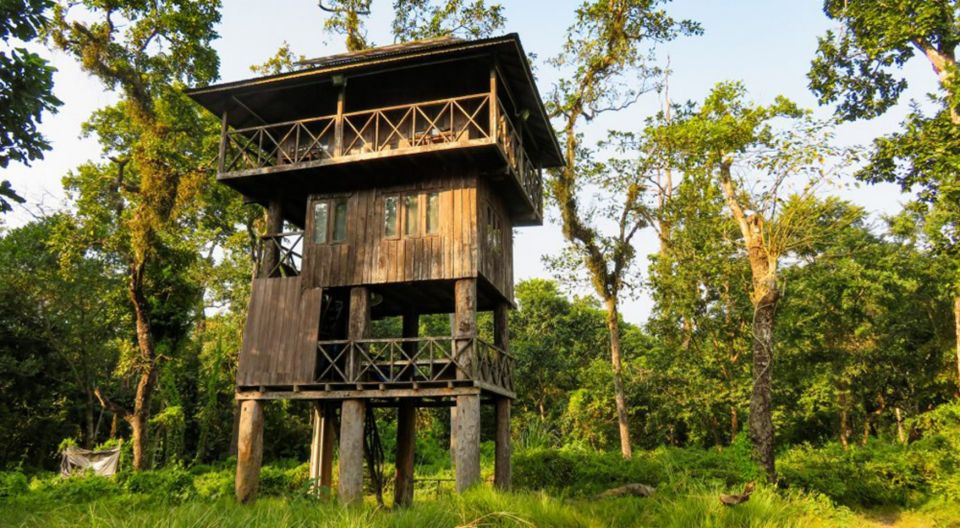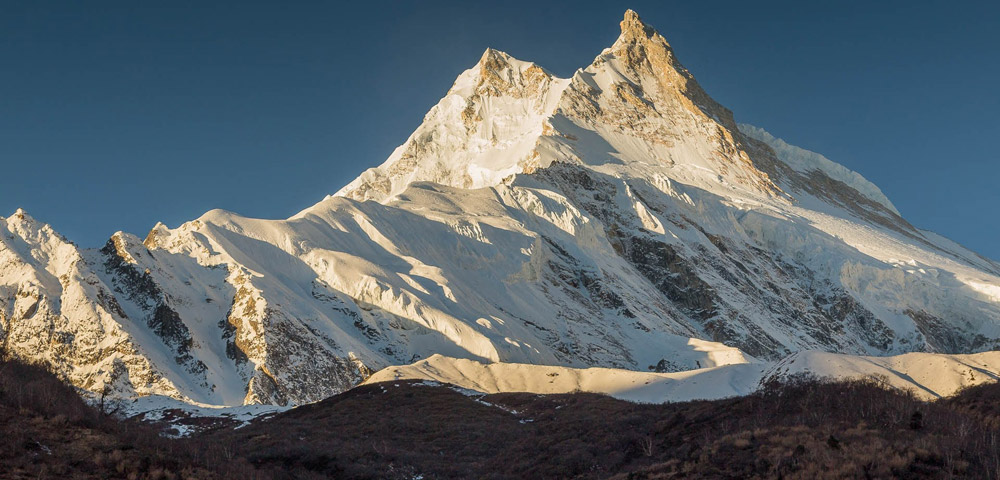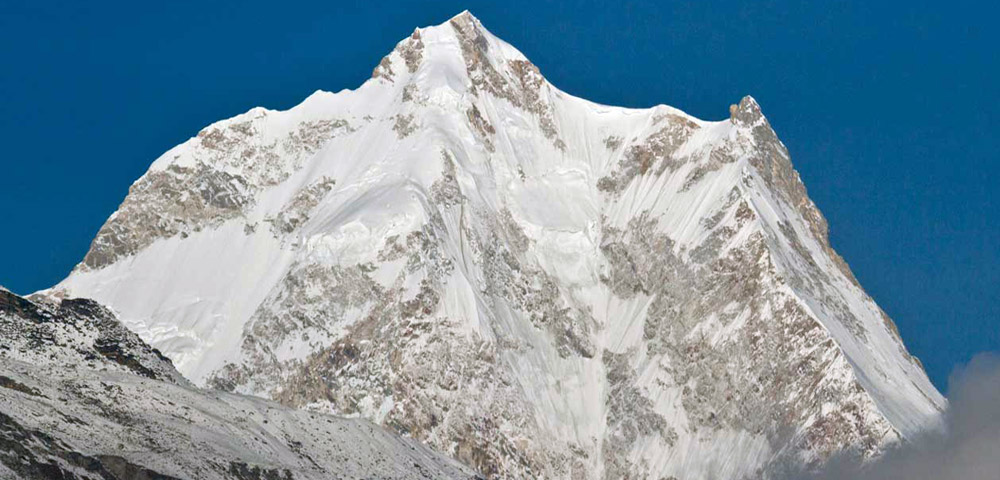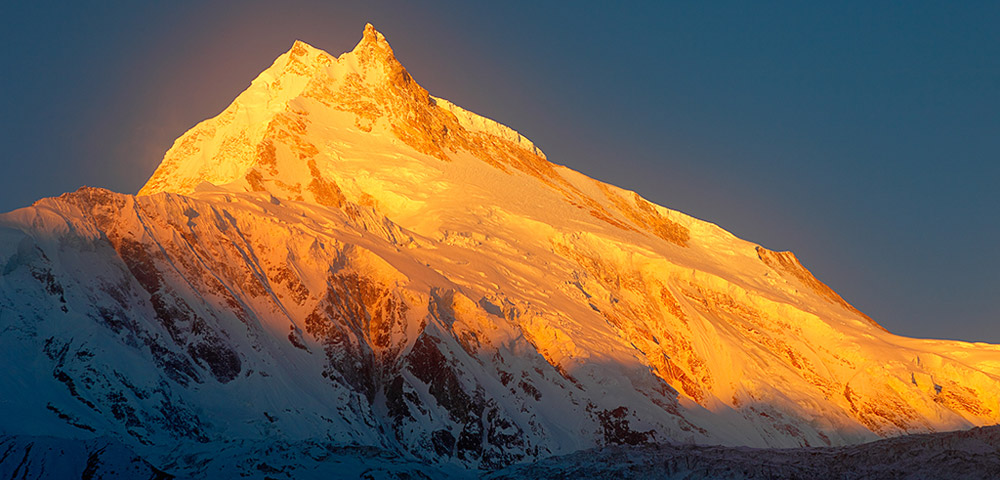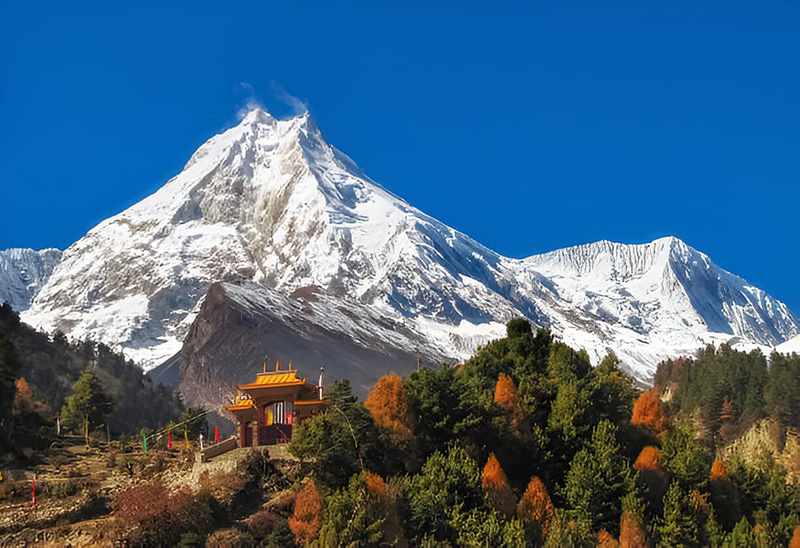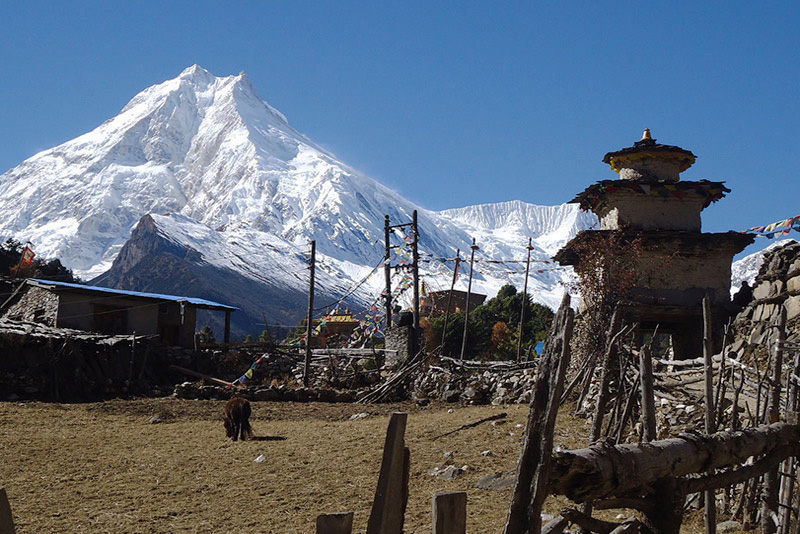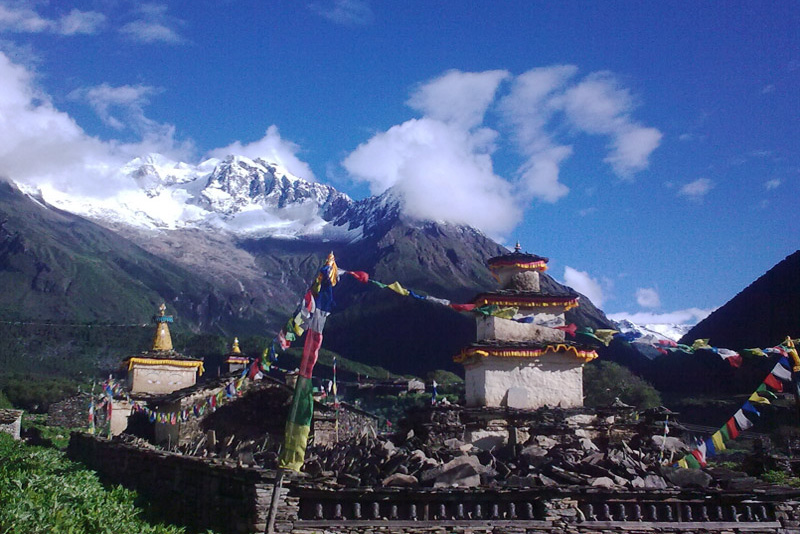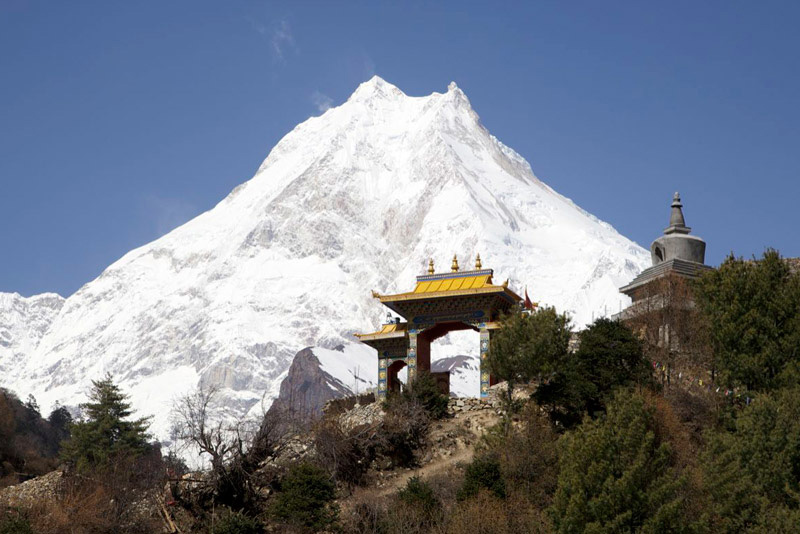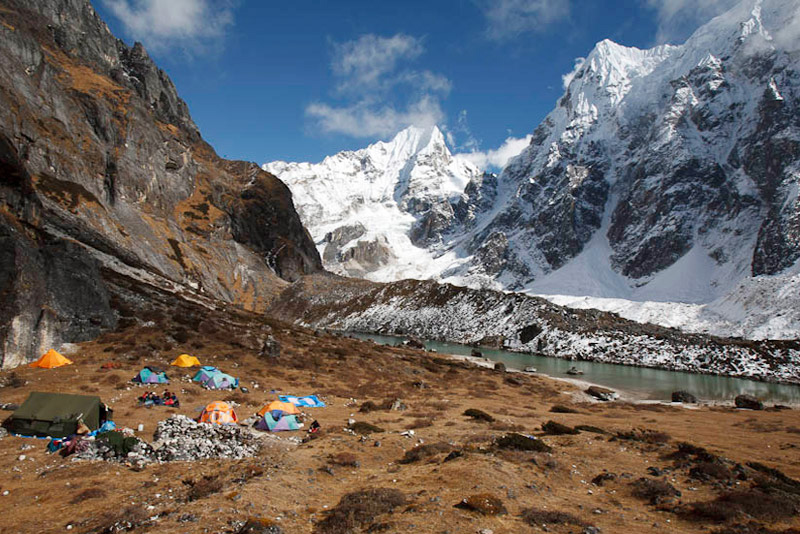Manaslu Tsum Valley Trek
The Manaslu Tsum Valley Trek is a unique and culturally rich trekking route in Nepal that combines the stunning natural beauty of the Manaslu region with the rich cultural heritage of the Tsum Valley.
The Tsum Valley, also known as the Hidden Valley, is located on the Nepal-Tibetan border in the northern portion of Manaslu and was a restricted region until 2008. Despite the fact that the territory is located in Nepal, the Buddhism-influenced region is a world unto itself. Historically, Tsum was a distinct region apart from both Nepal and Tibet. In compared to other tourist sites, the Tsum Valley region is still relatively untouched and has fewer well-traveled routes. The Tsum people have a unique approach to family life, which may surprise many visitors. All of the brothers in the family are each married to a single woman, a practice known as polyandry. In comparison to other regions, the Tsum Valley and Manaslu region is abundant with impending mountains, passes, steep gorges, hamlets, gompas, chortens, and mani walls.
The journey to Tsum Valley takes you via the spectacular Ganesh Himal, Sringi Himal, and Boudha Himal mountain ranges. During the first few days of the journey, we visit the Budhi Gandaki Valley via lush forest, terraced crops, and hill communities. As we leave the main Manaslu Trail for the Tsum valley, we experience a sudden sense of entering the secluded valley. During the walk, we also pass through alpine woods, glacial rivers, and ethnic communities who welcome us with open arms. We also visit the region’s old Buddhist Gombas, such as Milarepa’s Cave, Rachen Gompa, and Mu Gompa, among others.
Manaslu Tsum Valley Trek Highlights
Here are some of the highlights of the Manaslu Tsum Valley Trek.
Cultural Immersion: The Tsum Valley is known as the “Hidden Valley of Happiness” and is inhabited by the Tsumba people, who have a distinct culture and traditions. The trek offers a deep and authentic cultural experience as you interact with the local communities and learn about their way of life, language, and customs.
Buddhist Monasteries: The Tsum Valley is home to several ancient Buddhist monasteries and gompas (monastic complexes), including the famous Mu Gompa and Rachen Gompa. These monasteries hold spiritual significance and are adorned with beautiful murals, sculptures, and prayer flags.
Milarepa’s Cave: The Tsum Valley is believed to be a place of meditation and spiritual practice for the renowned Tibetan saint Milarepa. You can visit the cave where he is said to have meditated.
Stunning Landscapes: The trek offers a variety of landscapes, from terraced fields and lush forests to high-altitude alpine meadows and glacial terrain. The views of Mount Manaslu and other surrounding peaks are breathtaking.
Tsum Valley Extension: The Tsum Valley can be explored as an extension to the Manaslu Circuit Trek. This extension adds cultural depth and a more immersive experience to your trek.
Lower Crowds: The Tsum Valley is less visited compared to other popular trekking regions in Nepal, providing a quieter and more intimate trekking experience.
Challenging Passes: The trek involves crossing the challenging Larkya La Pass (5,160 meters), which offers panoramic views of the surrounding peaks and glaciers. This pass is a highlight of both the Manaslu Circuit and Tsum Valley treks.
Local Homestays: In some areas, you might have the opportunity to stay in local homestays, enhancing your cultural interaction and understanding of the local way of life.
Natural Hot Springs: The trek passes by natural hot springs, such as the Tatopani hot springs, where you can relax and rejuvenate after days of trekking.
The Best time for Manaslu Tsum Valley Trek
The best time to undertake the Manaslu Tsum Valley Trek is during the pre-monsoon spring season (March to May) and the post-monsoon autumn season (September to November). These months offer the most favorable weather and trekking conditions for a successful and enjoyable trek in both the Manaslu region and the culturally rich Tsum Valley. Both spring and autumn offer excellent trekking conditions, and your choice between the two depends on your preferences. Spring is known for its vibrant flora, lush landscapes, and beautiful flowers, while autumn provides clear skies, pleasant temperatures, and cultural experiences. Keep in mind that the Tsum Valley is a restricted trekking area, and a special permit is required.
When you arrive at Tibhuvan International Airport, our guide will pick you up and take you to your hotel in the bustling Thamel district of Kathmandu. Depending on your arrival time, you can choose to relax for the next journey, see the city’s attractions, or shop for adventure gear in one of Kathmandu’s many adventure supply stores. We’ll assemble our bikes and be ready for the journey in the afternoon.
Malekhu is reached via a scenic journey westward along the Prithvi Highway and through the verdant highlands. After passing Dhading Besi, the route becomes winding and leads us uphill to Gola Bhanjyang, where snow-capped mountain peaks are visible. The road then descends to cross Ankhu Khola, and we meet the Budhi Gandaki River at Arughat. Machha Khola is ultimately reached by continuing up the west bank of the Budhi Gandaki River.
After breakfast, we proceed over the narrow, winding pathways of the trail. After crossing the Tharo Khola, we arrive in Tatopani. Following the paths of the Budhi Gandaki River and passing through an area prone to landslides, we pass via the villages of Dobhan and Yaruphant. We enter Manaslu Conservation Area by crossing a suspension bridge over the Budhi Gandaki River and walk along a stone-paved trail to reach Jagat.
Today we enter the restricted Manaslu and Tsum Valley zone. Departing Jagat, we begin walking down the Budhi Gandaki riverfront past Salleri, Sirdibas, and Philim. Before proceeding to Ekle Bhatti, we register at the checkpoint in Philim while admiring the view of Shringi Himal (7,161 m). As we continue to trek alongside the Budhi Gandaki River, we reach a waterfall before entering Lokpa.
From Lokpa, we trek to Chumling along Shiar Khola’s rocky outcrops while following Shiar Khola. In Chumling, we can visit the Panago Gumba, Mani Dhungyur Gumba, and Gurwa Gumba monasteries. From Chumling, we continue up to Domje and then through numerous minor creeks to Chhokang Paro. Throughout today’s journey, we will enjoy an unimpeded glimpse of Shringi Himal (7,161 m). Upper Tsum valley is seen from Chhokang Paro, where friendly locals greet you with traditional Tibetan chiya.
Leaving Chhokang Paro, we hike uphill alongside Shiar Khola to reach at the old nunnery of Rachen Gompa in Tsum Valley. We arrive at Piren Phu/Milarepa cave while appreciating the valley’s scenic beauty. One of the holiest caves in the Tsum valley is Piren Phu. This cave is one of the most significant sociocultural assets of the valley due to its ancient Buddhist murals, beautiful stone-carved letters, lengthy prayer flags, and essential Buddhist writings. We continue up via the towns of Nile and Chule until we reach Mu Gompa, a large monastery with one hundred monks.
After spending the night at the Mu Gompa nunnery, we travel back to Chhokang Paro. Walking past small monasteries, Mani walls, and small communities, we approach the sacred Milarepa Cave before to arriving at the holy monastery of Rachen Gompa, whose walls are adorned with vibrant Buddhist artwork. Following Shiar Khola downstream, we arrive in Chhokang Paro.
Along a short path through the settlement, reach a wooden bridge over Shiar Khola. Cross the bridge to reach Domje, and then walk steeply through pines and rhododendrons until you reach the Mani wall adorned with prayer flags. Finally, make a vertical turn and go through a vast pine forest to reach Gumba Lungdang (3200m), a modest nunnery located at the foot of the Himalayas. Gumba Lungdang offers a breathtaking view of the Ganesh Himal range and the other Himalayas.
Cross Langdang Khola and ascend steeply on a difficult, unmarked path through the pine and rhododendron forest. Upon landing in Landan Kharka, we traverse the Torogumba Glacier’s parallel moraine. Before arriving at Ganesh Himal Base Camp, we approach Torogumba Kharka via the steep, snowy, and slick slopes of the Torogumba Glacier. From the base camp, one may enjoy a beautiful view of the Ganesh Himal range. Later, return to Gumba Lungdang on foot and attend the evening puja.
Today, we retrace our steps back to Lokpa via ascending a trail. Following Landang Khola and the hike along the south bank of Shiar Khola, reach Domje. We reach a micro-hydropower facility in Ripchet after passing several minor streams and monasteries. Then, after descending a rock fall region via the little town of Gumlung and traversing the Sarti Gorge on foot, we pass Lungwa Khola to reach Lokpa.
Cross the bridge over the Budhi Gandaki River to leave Lokpa and enter Nyak. Continue ascending the Budhi Gandaki River gorge until you reach the Gurung village of Deng. Enjoying the view of Shringi Himal (7161m) in the background, we traverse Mani walls and a number of bridges across the Budhi Gandaki River to reach Ghap.
Before reaching Lihi, ascend a landslide-prone trail uphill and through Mani walls, meadows, and cottages via fir, rhododendron, and oak forests. Continue walking upward past the town of Sho, then cross a landslide area to reach the tiny settlement of Lho. Throughout the trek, there are breathtaking views of Manaslu (8163m), Himal Chuli (7893m), Ngadi Chuli (7905m), and other adjacent mountains.
We reach Shyala by ascending alongside the Budhi Gandaki River, passing various tiny monasteries and Chortens while admiring the Manaslu range. The trail then crosses a bridge over the Punggen Glacier-fed Numla Khola. Descend down the vast valley, cross a school and a large Chorten, and you will arrive at a string of houses and front yards that make up the majority of Sama. The Pema Chyoling Lhakang Monastery is located at the end of the village near the Manaslu Glacier moraines. Samagaon provides a view of the Manaslu range, Naike Peak (6211m), and Larkya Peak (6249m).
Descend towards the north-bending Budhi Gandaki River and pass the path leading to Birendra Tal and Manaslu Base Camp. This is a simple path that encircles Kermo Kharka via juniper and birch woodlands. The trail then ascends to cross the Budhi Gandaki River over a wooden bridge and continue along the riverbed before reaching Samdo via the Mani walls. Enjoy the view of Samdo Peak (6335m) and its incredible glacial basin to the east, the Sama Valley and its ridges to the south, and a bird’s-eye perspective of the northern Syacha Glacier from Manaslu to the west.
Cross the northern village fields to reach the Budhi Gandaki River at Larkya Bazaar for the last time. The river ascends the Pana Danda Valley to the north. Traverse the westward trail above the Syacha Glacier. The source of the Syacha Glacier, which flows downhill from Manaslu North, is visible. Outside of Dharamsala’s Larkya La Phedi, the trail ascends the gorge to the Larkya Glacier via the Larkya La Phedi. Dharamsala provides a magnificent view of Larkya Peak (6,249 m) and Naike Peak (6,249 m) (6211m).
From Dharamsala, the trail ascends to a hill, followed by a gradual ascent to Larkya Glacier’s enormous and disorderly moraine. A short distance of walking leads to a gorge, followed by a fall to the first of four small, dispersed ice lakes. After finally traversing Larkya Glacier, we reach Larkya-La Pass (5160m), Nepal’s longest mountain pass. From the summit of Larkya-La, take in the panorama of Cheo Himal (6812m), Himlung (7126m), Gyaji Kung (7030m), Kangguru (6981m), and Annapurna II (7937m). Descend to Dangboche Kharka, where the trail follows the curvature of the side moraine of the Salpudanda Glacier into the lovely Bimthang Valley.
Descend from Bimthang and traverse the stony glacier to reach the untouched rhododendron and pine forest. The path descends along the west bank of Dudh Khola as we pass Hompuk and Sangure Kharka on route to Kharche, the highest point of cultivation. Trek through the forest to the Gurung village of Tilje, then drop steeply through the scrub forest to the Marsayangdi Valley. Pass the west bank immediately prior reaching Thonje, then bridge the Marsayangdi River to reach Dharapani.
Today is the final day of trekking as we descend to Syange via the Marsayangdi River. We pass through a landslide, Mani walls, the thatch-roofed town of Tall, waterfalls, and the communities of Sattale and Chamje before reaching Jagat, located on the banks of the Marsyangdi River.
Today, we travel to Kathmandu via a lengthy journey via verdant hills and rocky roads with views of the surrounding countryside. You can either rest or shop in the city upon arrival. You can also sample the native cuisine of Kathmandu. Stay at a 4-star hotel in Kathmandu for the night.
Today we will take you to the airport to catch your flight out of Nepal. Alternatively, if you’d like to stay longer, we may make additional travel arrangements to assist you continue your Nepal experience.
- All necessary ground transfers.
- All necessary accommodations as per the itinerary.
- Tea House accommodations during the trek.
- Daily breakfast, lunch and dinner during the trekking.
- All necessary paper works.
- All necessary trekking permits.
- Experienced and First Aid-trained trekking guide.
- Strong, helpful porters.
- Comprehensive medical supplies.
- Trekking map.
- Insurance of all local team.
- Warm clothing and trekking gear for staff.
- Sleeping bag and trip duffle bag.
- Trekking certificate issued by us.
- Welcome and farewell dinner in Kathmandu.
- Nepal Visa fee.
- International flights.
- All meals not mentioned in inclusions.
- Personal expenses not stipulated.
- Optional add-ons.
- Gratuities.
You might also like...
Top Add-on Trips
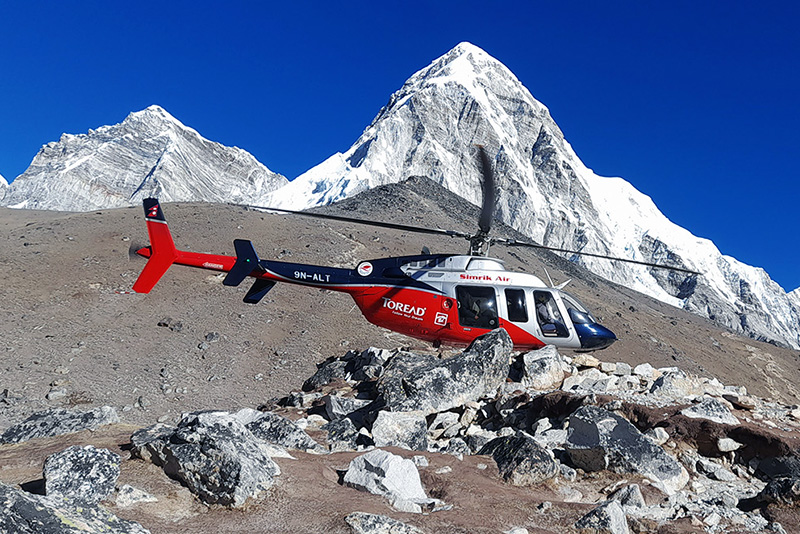
Everest Base Camp Helicopter Tour

Monastery Stay Tour
